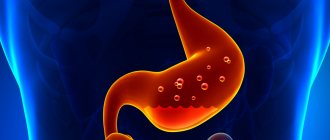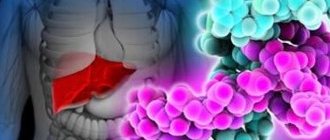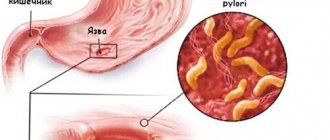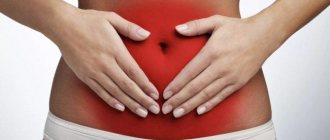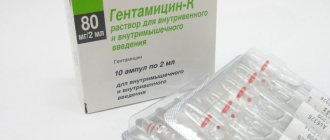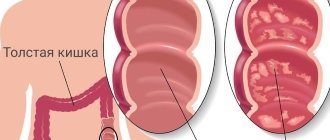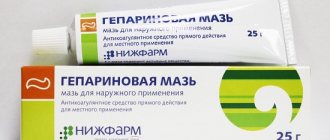Irregular eating, long breaks between meals and addiction to junk food lead to a person developing erosive bulbopathy. The peculiarity of the disease is that the intermediate area between the stomach and duodenum, which is called the bulb, is affected by an infectious or inflammatory process. Abrasions appear on its walls, which gradually develop into ulcers. If the pathology affects the small intestine, problems will arise in the absorption of food.
Analysis of concepts
Bulbopathy is by no means a specific diagnosis, but a generalized name for many pathologies of the bulbus, which inevitably lead to disruptions (to one degree or another) of intestinal digestion along the entire length of the digestive tube.
The causes of bulbopathy can be purely functional (impaired motility of the muscle layer, secretion, indigestion) and organic (intestinal deformations, tumors localized in the intestinal wall or in the immediate vicinity). Thus, the concept of bulbopathy includes bulbitis (inflammatory diseases of the mucous membrane), which give a diverse clinical picture, and the identification of atypical cells, which is classified as a precancerous condition and requires special attention.
Note! It is at least incorrect to replace the concept of “bulbit” with the concept of “bulbopathy” - it is much broader and more general.
What types are there?
The disease is classified according to certain parameters.
Inflammatory disease in a certain area of the duodenum is divided into several types, each of which is characterized by a specific clinical picture. The table shows the types of gastric bulbitis, taking into account different parameters:
| Classification | View |
| With the flow | Spicy |
| Chronic | |
| According to the length of the pathological process | Focal |
| Diffuse | |
| Based on the results of histological examination of the material | Erosive-ulcerative |
| Catarrhal | |
| Follicular | |
| Atrophic | |
| Mixed gastritis |
Classification of bulbits
Bulbits of different types give similar clinical symptoms, although they look different upon visual examination.
“Erythema” literally means “redness” in Greek. The rush of blood to the tissues, which causes redness, is not without cause; it is caused by certain irritating factors. This phenomenon occurs due to the thinning of the upper layer of the bulb and stagnation of blood in the vessels of the inflamed area, which is clearly visualized upon examination in the form of individual foci or a continuous surface.
But it is a characteristic sign of inflammation in general and bulbitis of any form in particular, therefore the expression “erythematous bulbopathy”, like the expression “congestive bulbopathy”, is not only not a diagnosis, but also illiterate from a medical point of view.
Another thing is that stagnation, disturbances in the motor properties of the intestine can and often become the cause of chronic and acute bulbitis. Stagnation of food provokes a significant narrowing of the lumen of the bulbus precisely in the place where the intestine sharply changes its spatial orientation, taking on a conditionally vertical position. Therefore, a slight weakening of peristalsis sometimes causes large-scale consequences.
Erosion is a superficial defect of the mucous membrane, but this name should not mislead anyone. This is a dangerous destruction of its upper layer, where the development of any ulcer begins, its forerunner. Erosive forms of bulbitis indicate that the disease is far advanced, and the patient did not receive adequate treatment, or the irritating agent acted for a short time, but had a high degree of aggression. For example, a person drank a concentrated solution of acid or consumed low-quality alcohol (which happens much more often).
Features of symptoms
The disease is divided into three types: erosive, acute and chronic and in the first stages does not show specific symptoms.
Its symptoms are characteristic of many gastrointestinal diseases. The chronic form of the pathology can sometimes go unnoticed until the patient detects blood in the feces.
The main symptoms of bulbitis are:
- Abdominal pain. It can manifest itself in the form of an acute feeling of hunger or pulling, cramping, and sometimes cutting “pain in the pit of the stomach.” In the chronic form of the disease, discomfort is localized in the upper part of the abdominal cavity;
- Nausea, vomiting;
- Lethargy, drowsiness, loss of performance.
Painful sensations often appear after eating, since food entering the digestive tract easily injures the inflamed gastric mucosa, causing an acute reaction.
They quickly disappear after drinking milk or drugs to reduce stomach acidity. Some people use painkillers, but they do more harm than good, disrupting the mucosal defense system, and only contribute to the development of pathology.
Causes of bulbopathy
The function of the duodenum (in Latin - duodenum), like the entire gastrointestinal tract, is carried out by regulators in the form of:
- the nervous system, or rather, its vegetative department, while the mental, emotional state of a person has a strong influence on him, albeit implicit;
- hormones secreted by the endocrine glands - the so-called hormonal adjustment;
- special biologically active substances - proteins, which are catalysts for complex processes and the secretion of enzymes, local level regulators that control the production and activation of digestive juices (in the duodenum, one of such regulators is trypsin).
Violation of such regulation can definitely lead to bulbopathy.
Among its external causes:
- nutrition factor;
- injuries to the mucous membrane of the bulbus by swallowed foreign bodies (one of the causes of erosive bulbitis);
- infections of the digestive tract, including the biliary tract and pancreas.
Note! Contamination with the bacterium Helicobacter pylori weakens local immunity and greatly increases the risk of developing bulbopathy.
Conditionally external (not directly related to the duodenum) causes of bulbopathy:
- neoplasms of different localization, complicating both motility and the secretion of enzymes in the lumen of the duodenum;
- disorders of nervous regulation, leading to spasms, disruption of blood supply to certain areas of tissue and having an indirect effect on peristalsis;
- violations of the acidity of gastric contents;
- helminthic infestations;
- congenital defects of the bulbus (duodenum).
As a rule, the basis of bulbopathy of any kind is a combination of a number of the listed reasons.
Prevention measures
To maintain health for many years and avoid such a debilitating disease, it is enough to follow a small list of simple rules:
- observe moderation in food and monitor your diet and daily routine;
- it is necessary to keep the body in good shape and do light exercise;
- include more dairy products in your diet;
- enjoy life more and avoid stress and neuroses.
Health-improving gymnastics
All diseases arise due to disturbances in the functioning of the autonomic nervous system. Constant anxiety and fear cause contractions of the muscles of the stomach and bulbous isthmus, disrupting the normal rhythm of work and secretion. Typically, bulbitis appears and causes unpleasant sensations when it is already in a fairly advanced state. Therefore, do not forget to monitor the condition of your body and consult a doctor on time!
Symptoms
The symptoms of bulbopathy depend on the nature of the pathology, and the symptoms of bulbitis are similar to the symptoms of inflammatory diseases of the stomach and are often of a blurred, implicit nature, making it difficult to make a diagnosis, among them:
- discomfort in the epigastric region;
- mild, so-called “spread” pain;
- bitter belching, occasional stool disorders.
Acute cutting pains are characteristic, as a rule, of erosive bulbitis. Pancreatic juice and concentrated bile, entering the lumen of the bile duct almost simultaneously, play the role of a hellish mixture for the inflamed mucosa.
Diagnostic methods
If you feel pain in the navel during palpation, this may indicate a diffuse type of disorder.
Treatment of the disease is necessary only after an accurate diagnosis has been made. With suspicion of bulbitis, contact a gastroenterologist. The doctor will conduct a visual examination of the patient, collect a detailed history and palpate the abdomen. With diffuse and other types of deviation, pain will be felt in the navel area during palpation. It is possible to confirm the diagnosis using diagnostic procedures such as:
- Gastroduodenoscopy. The procedure reveals bulbostasis and impaired integrity of the duodenal mucosa. The internal organ is enlarged and there is contact hemorrhage.
- Radiography. Diagnosis is carried out with a contrast agent, through which the dilation of the digestive tract organ is confirmed.
- Laboratory examination of gastric juice.
Diagnostics
Diagnosis of bulbopathy is multi-stage and impossible without a detailed interview with the patient. To identify systemic pathologies, the time frame of disease symptoms is very important. Indicative is the duration of the leading symptom for at least 3 months during the current six months.
Among the instrumental examination methods, the most informative is esofibrogastroduodenoscopy. It allows the endoscopist to see areas of inflammation and/or pathological changes in the tissue, if any - suspicious tumors, polyps, so-called granular tissue degeneration. In this case, a microscopic piece of tissue is taken for analysis - a biopsy. Ultrasound monitoring helps assess the condition of the biliary tract and pancreas.
Other examination methods include:
- general analysis of urine and blood;
- feces for helminths;
- biochemical blood tests, the volume of which is determined by the doctor.
Based on the survey results, the doctor may prescribe additional tests - a test to determine acidity and bacterial colonization.
What to do
The treatment regimen is built based on test results and based on the main symptoms and causes of the disease. Therapy for bulbitis comes down to eliminating the factors that caused the inflammation.
Drug therapy
The medicinal content of the treatment regimen depends on the type of pathology, the etiology of bulbitis, the patient’s condition (the nature of the symptoms present) and a bouquet of chronic diseases. A specific treatment regimen can only be drawn up for a specific patient. The list of drugs most often includes:
- anti-inflammatory and painkillers;
- antacids that reduce the irritating effect of stomach acid;
- enveloping agents that prevent further trauma to the mucous membrane and the development of complications;
- means that stimulate bulbus peristalsis and guarantee timely evacuation of food.
Bulbopathy of any type can lead to partial or complete loss of function of the entire duodenum.
Recommended Diet
Following a diet for any gastrointestinal disease is the most important condition for recovery. Food should be of such consistency, temperature and composition as to prevent irritation of the mucous membranes of the stomach and intestines, especially if they have areas of erosion.
Traditional medicine
For inflammation of the duodenum mucosa, raw potato juice has worked well as an additional remedy. For a month, take it in the morning on an empty stomach, at least 100 ml (half a glass, preferably a glass). It is prepared without allowing the raw materials to come into contact with metal and without using a juicer - the potatoes are grated on a plastic grater, and then the resulting mass is squeezed out.
Doctors recommend flax seeds as an enveloping agent. A tablespoon of raw material is poured in a glass of water in the evening, boiled for 10 minutes in the morning, left for half an hour, and taken a third of a glass three times a day between meals for a month.
Preventive recommendations
It is possible to avoid stomach bugs if you regularly monitor your diet. Do not overuse spicy, fatty and other unhealthy foods. You should eat regularly, eating small portions. Quitting smoking and alcoholic beverages helps prevent the pathological process. During long-term drug therapy, it is recommended to take probiotics that normalize the microflora of the gastrointestinal tract. An equally important preventive measure is regularly checking the body for helminth infection.
